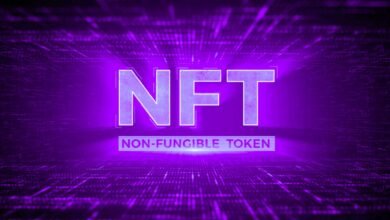
Bitcoin the commodity (BTC) progressed through its commercialization phase in 2021, establishing itself as a worldwide repository of wealth. BTC blooms as a means of exchange in the second monetization phase, emerging into prominence in 2022.
This is made possible by the Bitcoin blockchain’s basic reliability and safety and the evolution of Lightning Networking, a second-layer Bitcoin transaction mechanism. The ramifications have been far, including a unique avenue for financial intermediation for the world’s financially excluded.
Lightning Laboratories, a Lightning System infrastructural innovation business founded by Elizabeth Stark (CEO) as well as Olaoluwa Osuntokun (CTO), revealed on April 5, 2022, the revolutionary capacity to produce and transmit commodities on the Bitcoin blockchain, incorporating crypto assets like Tether (USDT).
On the Lightning Network, released commodities may be traded. Then by the end of 2022, Lightning Labs’ Pool product will offer volatility for published assets in the exact manner that it does presently for Bitcoin.
An innovative protocol named Taro, invented by Osuntokun, makes this functionality possible. Taro will eventually allow all Lightning System users to profit from Lightning’s near-free, near-instant worldwide transactions capacity despite having to deal with BTC’s present instability. Even individuals who use Bitcoin’s Lightning Network, such as the 3 million Salvadorans who interacted on Lightning in 2021, are now subject to its instability.
Taro was made feasible by implementing Taproot on Bitcoin Basic in November 2021, the most recent significant upgrade to the Bitcoin system. Taproot enhances the safety, confidentiality, and transaction velocity of the Bitcoin network, enabling more advanced smart agreements on the platform.
Taro, in particular, is a living example of how Bitcoin develops over time. Although protocol innovation concentrates on retaining and optimizing the technology’s essential information security and durability principles, “conservative” improvements can vastly expand the creative space of what could be developed on Bitcoin and Lightning, as Taro collaborates with Taproot illustrates.
Significantly – and fundamentally – Bitcoin’s usefulness is increased without any modification or danger to the software’s guarantees. The overall quantity of Bitcoin to be placed into existence, the issuance timetable, the payout scheme for miners, and many more are all part of these regulations.
How Does it Work?
The commodity category bitcoin exists alongside the worldwide interoperability bitcoin financial system. Lightning Laboratories is riding on the back of the latter. To clarify a transfer of funds on the Bitcoin blockchain, only those mobile nodes must usually agree, as well as every payment on the blockchain technology should be verified.
The procedure emphasizes one of Bitcoin’s biggest assets: its high level of system decentralization, which would be a key component of the currency’s safety. However, it is sluggish (averages five payments per second on Bitcoin’s basic layer), which can be costly.
On the Lightning Network, not even all participating nodes must approve. On the other hand, Nodes only validate transactions with which they have been involved directly.
However, Lightning Labs claims that perhaps the Taro protocol is a significant leap forward in Lightning’s ability to operate like the internet’s core commodity transmission mechanism. To involve as many individuals as feasible in operation, the eventual objective is to establish a seamless on-ramp to the world economy that requires a cell phone.
Lightning Labs, which recently completed a $70 million Series B round backed by early Tesla and SpaceX investor Valor Equity Partners, is publishing the Taro protocol’s technological standard so that it can integrate programmer suggestions as it proceeds to improve the network.
The Application of Taro in Emerging Markets:
The updated protocol will broaden the audience for which Lightning Network applications and infrastructures can be useful. Lightning is a valuable payment rail for persons who have a limited intolerance for BTC instability, including those with a poor socioeconomic situation or those who live paycheck to paycheck.
With this breakthrough, BTC instability may be accessible as needed by each customer, and losses can be prevented if they are too great. When subjected to variability, the customer can adjust the scale by increasing or decreasing it.
If you are using Lightning and Taro to send payment in USDT or BTC, the receiver would be prompted whether they want to keep the payment in Bitcoins for long-term investment or USDT for instant or relatively brief expenditures. You have the option to choose. Taro promotes Bitcoin and the Lightning Network as a challenger to the SWIFT financial communications network and commercial finance in this approach.







